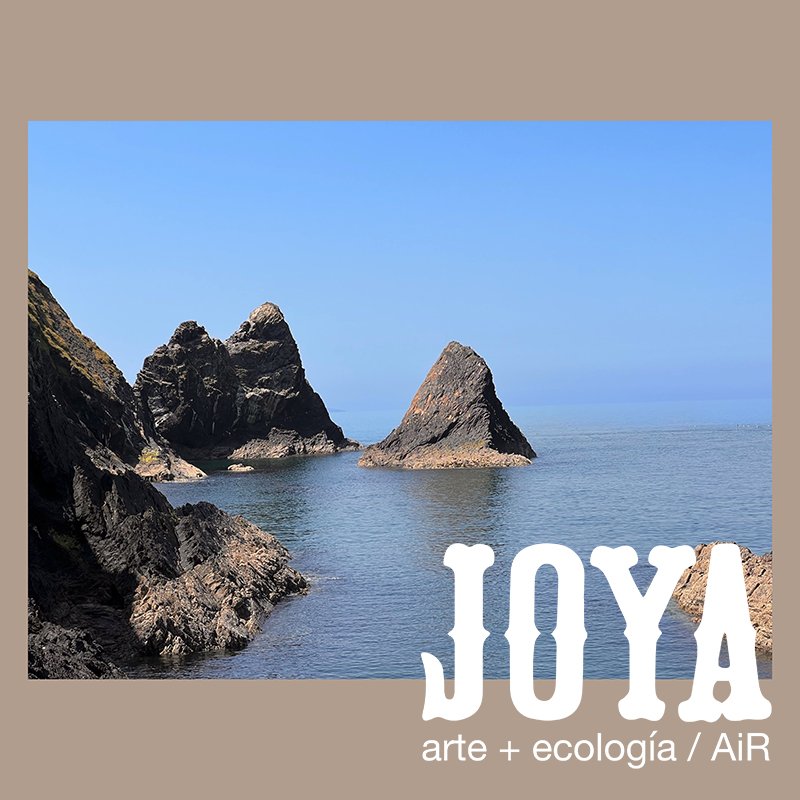“Joya: AiR is an arts residency developed by artists for artists of every conceivable discipline. Consider Joya: AiR not only a unique, stimulating and contemplative environment for international artists, writers and researchers, but as a meeting point for divergent and creative thinking. This is a multi-disciplinary residency, self determined, critical and profoundly engaging”
“Climate-positive since 2006, Joya: AiR functions as a generative space for the emergence of climate culture, where artistic exploration contributes to reimagining human-nonhuman relations through the lenses of sustainability, rewilding, and deep ecological thinking”
Joya: arte + ecología / Air
associated with the following universities:
Manchester School of Art, Manchester Metropolitan University, ENG
Central Saint Martins, University of the Arts London, ENG
Facultad de Bellas Artes, Universidad de Granada, ESP
“Located in the semi-arid landscapes of southeastern Spain (BSh), Joya: AiR operates at the intersection of creative practice and ecological design”
“Joya: AiR offers a site-responsive context where interdisciplinary practice is deeply embedded within the dynamics of place”
resident artists 2025
artists / writers / researchers . June
Anna Sielska / Katarzyna Zolich / Barbara Kubska / Charly Blackburn / Micah Shaffer / Nadine Valcin / Yeni Ma / Richard Barlow / Berin Golonu / Tess Sheerin / Isabel Urbina / Kate Terry / Jo Bertini / Liz Harrington / Kritha Makwana
“Joya: AiR emphasises the deep connection between artistic exploration and the environment, supporting practices that are responsive to the materials, rhythms, and care required by fragile ecosystems”
“Set in the highlands of Almería, within the Comarca de Los Vélez, Joya: AiR inhabits a landscape shaped by wind, water, and time — a place where the mountains hold forests, and the valleys crack open into drylands. This is a transitional terrain: part wildland, part badlands, rich with contrasts and resilience.
Here, ecological boundaries are visible and felt — in the arid breath of the soil, the patterns of abandonment and regrowth, the erosional signatures etched into the land. Yet this is not a desert. It is a semi-arid ecotone where biodiversity and geological memory intersect, offering a raw and urgent context for creative exploration.
Artists-in-residence engage not just with landscape, but with process: of restoration, of listening, of imagining alternatives to extraction and decline. Los Vélez is not merely backdrop — it is collaborator, archive, and provocation.
At Joya: AiR, you are invited into dialogue with a territory at the threshold — where creative practice becomes an act of care, and the future of drylands is not yet written.”



















